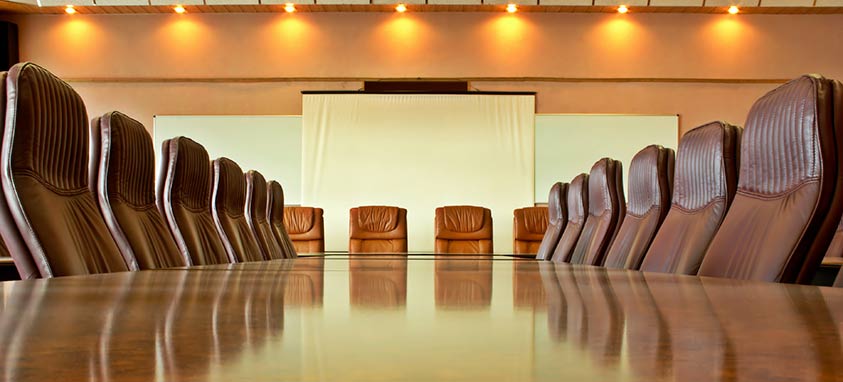Light has been around as long as the human race. First came fire, a primitive source that served a dual purpose of heating and illumination. Roughly a hundred or so years ago, incandescent light was invented. This light source remains in use today and is a relatively simple process, passing an electrical current through a resistor, which creates both light and heat.
In the last 60 or so years, newer technologies have appeared: fluorescent, low and high-pressure sodium, metal halide, compact florescent. While these are significantly more efficient light sources than fire or incandescent (as measured by their ability to convert energy primarily into light), they pale in comparison to the last 18 months of development lighting technology, including solid-state light sources such as LED.
Solid-state lighting at its core is a basic machine; a power-transformer converts high voltage alternative current to low voltage direct current and a solid-state semiconductor, typically an LED, becomes excited and creates light. The speed of progression of lighting technology is rapid. The LED is now exceedingly more efficient, produces significantly higher quality light, and lasts, on average, five times longer than traditional light sources. This view of lighting today, while historically accurate, is myopic.
Lights being developed now need power conversion, electrical circuit boards and even some basic processing power. And lighting that we know today will pale in comparison to the technology now being developed. In the future, lighting technology will be an integral extension of a building’s management system, providing significantly more value beyond lighting. Lights must be installed in every building, thus they are a natural information gathering point.
Integrating Lighting and Building Controls
The job of integrating building controls and sensory functions into a light fixture may appear complex. For the building owner and for the contractors doing purchasing and maintenance, numerous separate systems are a highly inefficient use of money and resources. The devices themselves must each have separate housing, power conversion and usually a communications network. LED lighting, in contrast, can be a “one-stop shop” and the “Swiss army knife” of building electronics.
For example, in a hotel setting indoor light fixtures are often placed every 100 sq. ft. or even more densely. Decorative sconces illuminate every hallway, grand chandeliers are suspended in the lobby and ballrooms, and task and bedside lighting gives guests the comfort of home in their rooms. The number of lights in a hotel and the uses are infinite. Lighting’s deployment within buildings makes the possibility of highly granular information-gathering a reality. Collecting information from sensors in such a dense deployment can provide unimagined uses.
Imagine a lighting system in hotel meeting rooms that can read temperature, humidity, carbon dioxide and VOC (volatile organic compounds), then passing this information directly to the HVAC system to seamless optimize the space for the occupants. Conference rooms that used to feel stuffy, now automatically detect occupancy and changes in the air quality to run the air handling system, bringing fresh air into the room and reinvigorating the discussion.
Lobby lights could also be used to detect preferred guests based on their use of a particular hotel’s smartphone app. As a guest sets foot inside the lobby door, the lights can identify the individual and automatically direct him/her to, and give access, to a hotel room. No need to see the front desk and get a key; authentication and access can all be provided through the power of cloud-connected devices.
Regulating temperature and lighting in rooms that are vacant or unoccupied at a given moment can result in cost-savings. Lights in hallways, guest rooms and other areas of the hotel can be directly connected to the utility, and automatically read price signals from the smart grid. When a hallway, or other space, is unoccupied and electricity prices are unusually high, the lights can set themselves very low – providing the hotel owner with significantly lower operating costs while placing virtually no impact to the occupants in the space.
These scenarios, and other iterations, while seemingly farfetched when looking backward, are now the reality of solid-state light systems of modern day.
Future is Bright
Like all rapidly developing, new technology, many questions and concerns arise in the unknown. What about privacy? How much information is too much? What will happen if the system goes down or is hacked? Are lights now the responsibility of IT and not maintenance?
These questions are real, and many don’t have answers yet. However, the benefits in energy savings, intelligence and infrastructure optimization can far outweigh these concerns.
In time, the majority of benefits to hotel owners will arise from capabilities such as more granular control of HVAC systems, better security for guests, and the ability to pass on cost savings to guests and businesses using hotel facilities as a strategic competitive advantage. How semiconductors will change the lighting industry within the buildings into which the lights are installed, and how the experience of hotel guests will change will perhaps be more obvious in retrospect.
While the change is occurring, it may seem slow – but relative to our technology transition over the last few thousand years, we are now moving at the speed of light.
 Matthew Sallee is a business technologist based in Denver with more than a decade in the B2B technology space. He has held various marketing and leadership roles in Fortune 500 companies and has spoken internationally on LED technology and energy efficiency. He now handles business development and strategic marketing for Terralux, which designs and manufactures LED lighting and building intelligence solutions.
Matthew Sallee is a business technologist based in Denver with more than a decade in the B2B technology space. He has held various marketing and leadership roles in Fortune 500 companies and has spoken internationally on LED technology and energy efficiency. He now handles business development and strategic marketing for Terralux, which designs and manufactures LED lighting and building intelligence solutions.




